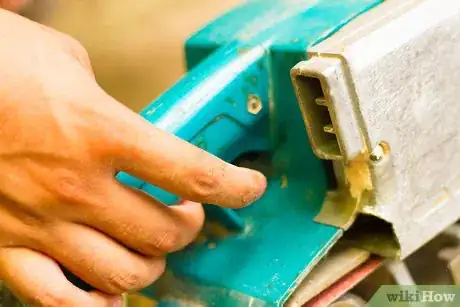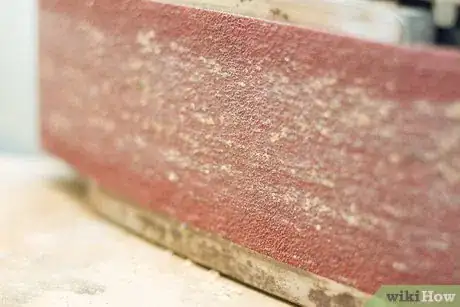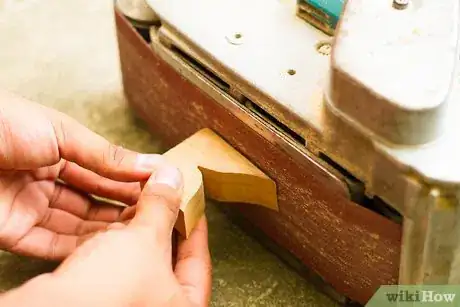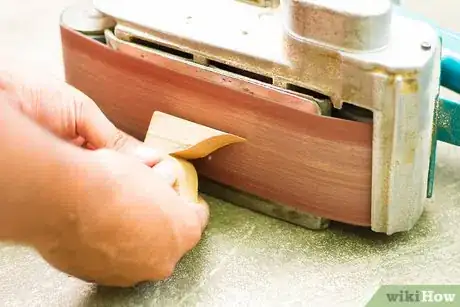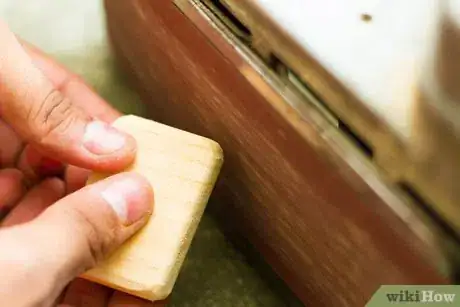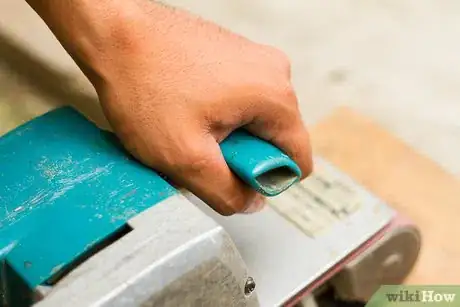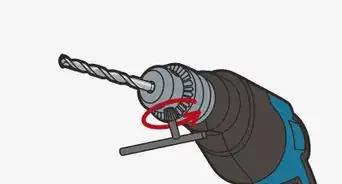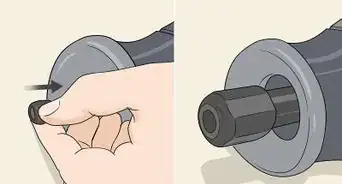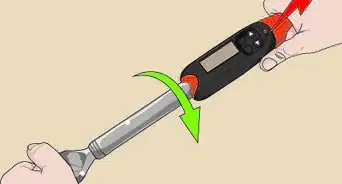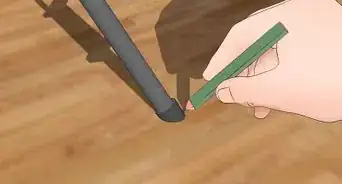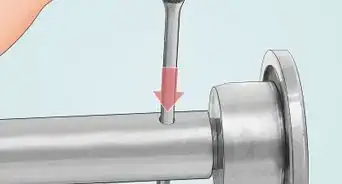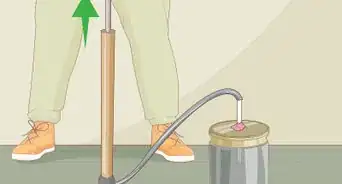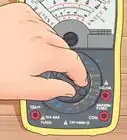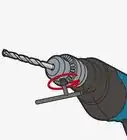X
wikiHow is a “wiki,” similar to Wikipedia, which means that many of our articles are co-written by multiple authors. To create this article, 14 people, some anonymous, worked to edit and improve it over time.
This article has been viewed 54,426 times.
Learn more...
A belt sander is a woodworking tool designed to sand down or smooth wood to prepare it for finishing. It can also be used to smooth or round edges. A belt sander is rather large and if not used properly can result in damaging your wood or causing serious injury. However, using a belt sander is a pretty simple operation. Here are the necessary steps to follow to properly use a belt sander.
Steps
-
1Prepare your wood to be sanded by ensuring it is properly secured on the table or workbench.[1]
-
2Put on the necessary safety gear, such as goggles or gloves. If your belt sander contains a collection bag to collect the sawdust, goggles are not typically necessary.[2]
- Belt sanders can kick up a lot of sawdust, which can easily fly into your eyes. This could lead to instinctively dropping the sander, which could cause injury.[3]
Advertisement -
3
-
4Bring the rear of the sander down to the wood, ensuring you have a firm grip on the back handle, which is used to control the sander.
-
5After you bring the rear of the sander down, start moving it forward.
-
6Bring the rest of the sander onto the wood as smooth as possible.
-
7Move the sander back and forth in smooth, even motions, using the front handle to guide it across the wood.
Advertisement
Community Q&A
-
QuestionDo I move the belt sander across up and down or side to side?
 Community AnswerSide to side, as you will have more control over it than moving it up and down.
Community AnswerSide to side, as you will have more control over it than moving it up and down. -
QuestionHow do I adjust the belt so that it doesn’t slip to the side?
 Community AnswerThe first thing you will need to do is find out the size of the belt sander. This is the length of the area that goes around where you will be putting new sand paper. The size should be in the directions. Having the proper size sanding belt keeps the belt from moving so much. Some belt sanders have a small screw to adjust the tension (the screw's may be Phillips head, flat head, or possibly an Allen wrench). Again, please refer to the owners manual to make sure both for the location and the manufacturer's directions. Other's may have a manual knob to turn. Caution: Do not overtighten!
Community AnswerThe first thing you will need to do is find out the size of the belt sander. This is the length of the area that goes around where you will be putting new sand paper. The size should be in the directions. Having the proper size sanding belt keeps the belt from moving so much. Some belt sanders have a small screw to adjust the tension (the screw's may be Phillips head, flat head, or possibly an Allen wrench). Again, please refer to the owners manual to make sure both for the location and the manufacturer's directions. Other's may have a manual knob to turn. Caution: Do not overtighten!
Advertisement
Warnings
- Don't tip the sander on its side, as the edge of the sander can cut into the wood.⧼thumbs_response⧽
- Don't put any unnecessary extra pressure on the wood. The belt sander is a heavy instrument and typically uses its own weight to apply even pressure.⧼thumbs_response⧽
Advertisement
Things You'll Need
- Workbench or table
- Goggles
- Gloves
- Belt sander
References
- ↑ https://www.youtube.com/watch?v=GzQyQYRbUz8
- ↑ https://www.nytimes.com/1986/04/27/nyregion/home-clinic-the-do-s-and-don-ts-of-using-portable-electric-sanders.html
- ↑ https://www.osha.gov/Publications/woodworking_hazards/osha3157.html
- ↑ https://www.youtube.com/watch?v=M3bJnyCyQd0
- ↑ https://www.youtube.com/watch?v=M3bJnyCyQd0
About This Article
Advertisement



